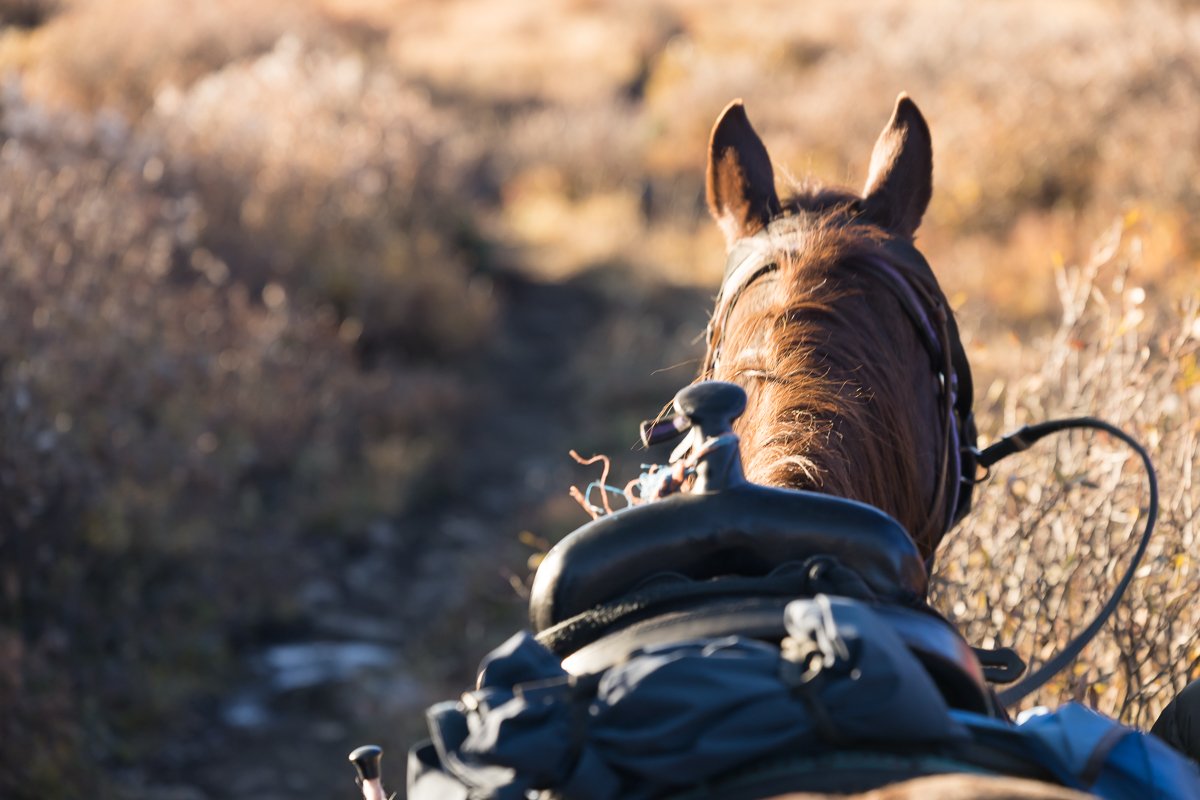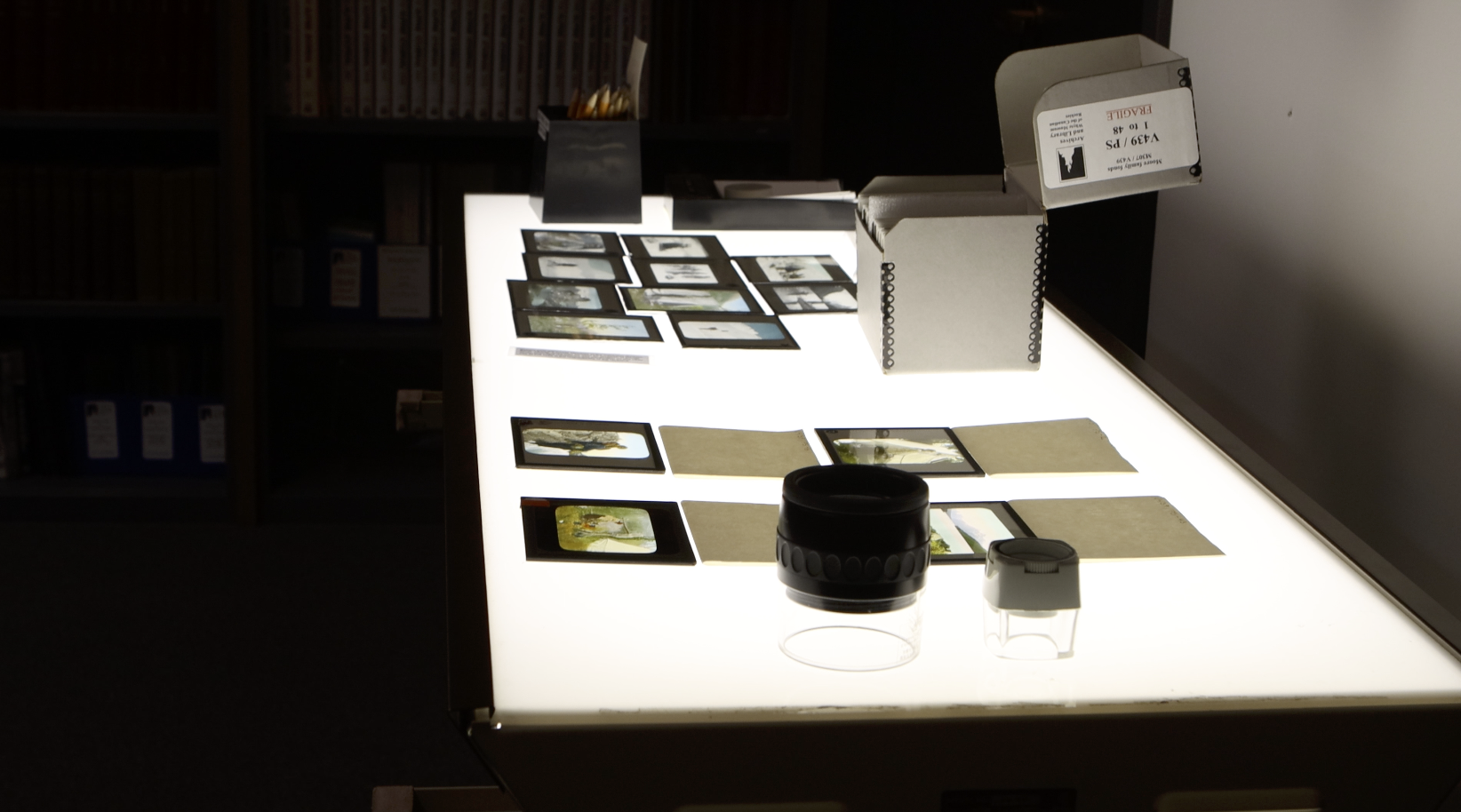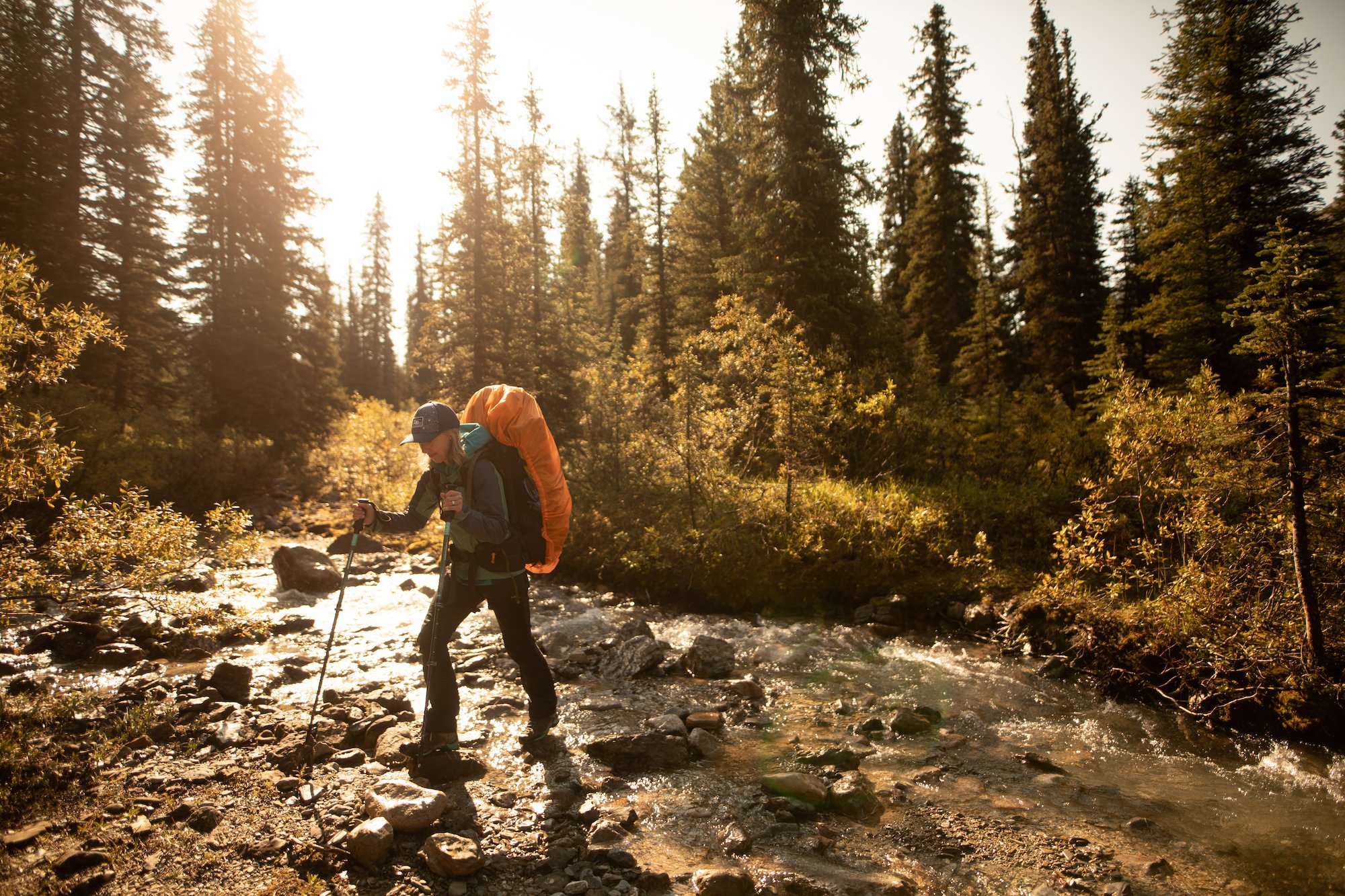
The Story
A woman-powered documentary film about one of Canada's most overlooked trailblazers. Wildflowers blends backcountry adventure with a historical deep-dive to explore the themes that bond two writers living a century apart.
Featuring Mary Schäffer Warren (1861-1939) and Royal Canadian Geographical Society (RCGS) Fellow, Meghan J. Ward (b. 1984).
Mary Schäffer Warren (1861-1939) was 43 years old and recently widowed when she bucked Victorian-era conventions and reinvented herself as a mountain explorer, writer, and photographer. Over a century later, Meghan J. Ward — an outdoor writer, historian and Fellow of the Royal Canadian Geographical Society (RCGS) — encounters Mary’s remarkable story. Captivated by the mystery of this woman she can’t meet in person, Meghan embarks on a journey of archival research and backcountry adventures to better understand Mary’s legacy and motivations. She invites photographer/RCGS Fellow Natalie Gillis and travel writer Jane Marshall on a six-day hiking and paddling expedition to retrace the final leg of Mary’s famous 1908 expedition to Maligne Lake in Jasper National Park, Alberta. Delving into a landscape that connects adventurers across time, the modern-day team compares past to present, reflects on Mary’s legacy, and discovers that sometimes we must look back to blaze a better trail forward.
[Mary Schaffer and Billy Warren] V439 / PS - 6 WMCR.
Meghan J. Ward. Photo by Paul Zizka.
In Mary Schäffer Warren, we’ve found a true trailblazer and inspiration for modern-day women, creatives and people from many walks of life. We initially set out to make a film about a bold character who bucked conventional norms and embraced a wild spirit. But the more we delved into Mary’s story, the more the focus of the film turned to how she inspires us to rethink history, deepen our relationship with nature, and pursue our passion and creativity with zeal. We want as many people as possible to meet Mary, whose story also challenges us to look at the colonial history of the Canadian Rockies with a fresh and nuanced perspective.
Schäffer’s camera gear and lantern slide projector at the Whyte Museum of the Canadian Rockies. Photo: Nat Gillis.
Schäffer’s lantern slide collection. Photo by Trixie Pacis.
Schäffer’s book (1911) that chronicles her 1907 and 1908 expeditions. Photo: Trixie Pacis.
Meghan takes a close look at lantern slides. Photo by Nat Gillis.
The many names of Mary Schäffer Warren. Photo by Meghan J. Ward.
Meghan J. Ward. Photo by Paul Zizka.
[Mary Schaffer crossing stream on log, William Warren watching] V439 / PS - 3 WMCR.
Meghan on the horsepacking trip into Red Deer Lakes. Photo by Trixie Pacis.
Meghan and Jane at Maligne Pass. Photo by Nat Gillis.
Jane Marshall crosses one of the many streams in the area. Photo by Nat Gillis.
A still of photographer Nat Gillis on a scramble to obtain a repeat of Sid Unwin’s shot of Maligne when he first spotted it on the 1908 expedition. Image by Anandi Brownstein.
Meghan J. Ward writing before the canoe journey begins. Photo by Nat Gillis.
A sample repeat photo from a series Nat Gillis photographed during the expedition. Here our crew paddles through the frame, which shows an image of the raft in front of Mt. Unwin that Schäffer’s group built back in 1908. Photo: Nat Gillis. Archival photo: Mt. [Mount] Unwin from Camp [Maligne Lake], V527 / PS 1 - 68 WMCR. Photo: Nat Gillis.
By exploring the common threads between two kindred souls living a century apart, Wildflowers aims to shine a light on the impacts of Schäffer’s legacy, showcase the beauty of Canada’s mountain national parks, and inspire people of all ages to pursue their greatest ambitions.

The Background
The idea was first born in March 2020 when emerging filmmaker Trixie Pacis pitched the story to the Banff Centre Adventure Filmmakers Workshop. She wondered: Why had no one ever done a documentary about Mary Schäffer Warren — such a powerful female figure in Western Canadian history? The idea started coming to life on a hike when she mentioned it to friend and Rockies-based writer and historian, Meghan J. Ward. Meghan, it turned out, had been tracking and exploring Schäffer’s story for nearly 20 years.
Meghan considered how Schäffer is well-known in the Rockies, however, Trixie’s observations about her story being under-told were true. Growing up on opposite sides of the country, neither Trixie nor Meghan had heard of Schäffer until they spent time in Banff, Alberta, where Schäffer made her historic mark and spent her last decades. That Schâffer isn't more well-known in a broader context was baffling to the two. Trixie and Meghan set off to change that. Seeing that the scope of the project was growing by the minute, the two teamed up as co-producers.
What's more, the filmmakers set off to work with as many women as possible through the process. Women creators are underrepresented in the outdoor filmmaking space. Many women, as well as members of the BIPOC community, need to see each other working in this industry in order to feel encouraged to participate. We are proud to showcase a diverse all-women cast and women-led production team, including director and co-producers, as well as the work of women creatives in the areas cinematography, editing, sound mixing, photography, and visual art. Our dream team is rounded out by the talents and contributions of creatives we feel so fortunate to be working with.
Wildflowers is filmed and produced on Treaties 6, 7 and 8 Territory, the traditional and sacred lands of the Niitsitapi from the Blackfoot Confederacy (the Siksika, Kainai, and Piikani Nations); the Stoney Nation comprised of the Chiniki, Bearspaw, and Goodstoney; the Tsuut’ina Nation; the homeland of the Métis and Otipemisiwak Métis Government of the Métis Nation of Alberta; the Ktunaxa and Secwépemc Nations; the Mountain Cree clan of Chief Peechee; the Dene; and the traditional territories of the Katzie and Kwantlen Nations. It is with gratitude that we visit these landscapes.
Filmed on location and with the permission of the Parks Canada Agency, at Jasper National Park and Banff National Park, Alberta, Canada, as well as with permission of the Town of Banff.





















